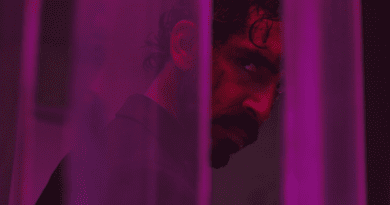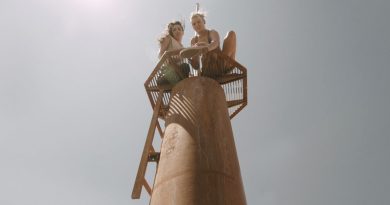Nosferatu (2024) Review: Robert Eggers’ Eerie and Atmospheric Vampire Horror Features a Top-Notch Cast
It never crosses my mind that Robert Eggers’ take on the Nosferatu remake turns out to be his most accessible movie to date. I figure it would have been a deliberate slow-burn horror that echoes his impressive debut feature in The Witch. Not that it’s a bad thing to see Eggers opt for a straightforward re-telling of the movie, which was first conceived by F.W. Murnau’s 1922 black-and-white silent-film classic and later, Werner Herzog’s Nosferatu the Vampyre and to a certain extent, E. Elias Merhige’s Shadow of the Vampire.
Besides, Eggers wastes no time getting down to business right from the get-go as he establishes the dread-inducing tension detailing Ellen’s (Lily-Rose Depp) ominous night terrors. The movie then jumps to years later in the wintry town of Wisburg, Germany in 1838. We learn she is married to Thomas Hutter (Nicholas Hoult). The latter is working for Herr Knock (Simon McBurney), the owner of a brokerage firm who will promise him full employment if he can journey all the way to Count Orlok’s (Bill Skarsgård) castle to close a property deal for selling the derelict Grünewald Manor.
Since Thomas needs the money more than ever, he agrees to accept the job. While he’s off to meet Count Orlok, he relies on his wealthy friend Friedrich Harding’s (Aaron Taylor-Johnson) help to take care of Ellen. What should have been a straightforward deal turns out to be an unpleasant journey that he doesn’t expect in the first place. It begins with the locals trying their best to stay away from Thomas after they learn about him heading to Count Orlok’s castle. And by the time Thomas eventually meets Count Orlok, there’s an air of menace lingering within the dimly lit castle.
Eggers does a good job obscuring Count Orlok’s appearance in a strategic manner, often in shadows or scarcely illuminated light source. Even without a fully visible appearance, Skarsgård’s Count Orlok looks intimidating with his imposing height not to mention his long, gnarled fingers. But Eggers also made a daring change in Count Orlok, specifically his facial appearance in a heavy prosthetic makeup that is gradually revealed later in the movie, which I have to admit took me some time to get used to. The same also goes for his unusually deep, booming voice that echoes the background each time he speaks.
So, for the first half of the movie, Eggers is heading on the right track with props to Jarin Blaschke’s atmospheric, yet borderline monochromatic cinematography. Then, there’s Robin Carolan’s sinister score while Craig Lathrop’s production design nails the eerie and forbidding look of Count Orlok’s castle as well as the overall chillingly Gothic atmosphere of the interior and exterior shots throughout the movie. Apart from Skarsgård, Nosferatu also benefits from Nicholas Hoult and Lily-Rose Depp’s performances, where the latter excels as the possessed Ellen.
The supporting roles are equally worth mentioning here including Aaron Taylor-Johnson as the stubbornly pragmatic Friedrich Harding while Willem Dafoe shows up in his typically eccentric role as the occult professor Albin Eberhart Von Franz and not to forget, Ralph Ineson as the concerned Dr Sievers.
As much as I enjoy Eggers’ gorgeously shot old-school Gothic horror, Nosferatu starts to show some cracks once the second half of the movie takes place. The story meanders around now and then with several drawn-out scenes that could have used some trimmings, which at times, make the movie’s 132-minute length feel unnecessarily longer.
At the time of writing, Nosferatu has since become Eggers’ biggest box-office hit to date since its original Christmas release last year before finally making its way to the digital platforms this week. It was far from Eggers’ best work (the honour remains The Witch and The Lighthouse) but at least Nosferatu is a step up over his violent but disappointing epic Viking revenge saga in The Northman.





